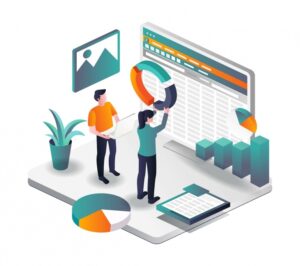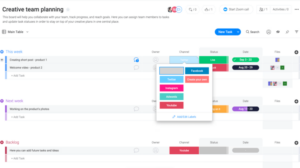Cloud provider’s API integrates with point-of-sale terminals to help order takers customize calls and ensure reliability.

Image: Kzenon/Getty Images/iStockphoto
According to the American Pizza Community, more than 50% of orders come in via digital channels. That means a significant chunk of customers are still picking up the phone to place an order. Domino’s announced a new partnership with Vonage to route those calls through the cloud to improve reliability and increase customization.
Domino’s rolled out its new Intelligent Call Manager powered by Vonage’s Voice API and its Unified Communications solution. First, Call Manager warns workers in noisy pizza shops that a call is coming in before the phone rings. The API platform intercepts the call, sends the alert, and then the phone rings. Next, customer information pops up on the point-of-sale terminal. This lets the order taker know who is calling and what the person has ordered in the past.
SEE: Top cloud providers in 2020: AWS, Microsoft Azure, and Google Cloud, hybrid, SaaS players (TechRepublic)
The new platform also integrates Domino’s Tracker, which allows customers to monitor their order status in real time into the point-of-sale terminal, and route Spanish-speaking customers to a call center agent. Domino’s has more than 6,000 franchise and corporate locations in the US.
“As our business and franchise network continues to grow, we wanted to leverage the Vonage service offering in order to provide our franchisees with the tools they need to stay connected to our customers,” said Kelly Garcia, chief technical officer for Domino’s, in a press release.
Sanjay Srinivasan, the chief architect at Vonage, said that Domino’s goal with the new service was to insert the digital buying experience into a phone call.
“Domino’s needed reliable phone service and a rich buying experience over the phone, which is important now and for the future,” he said. “It’s a critical part of the buying experience that the pizza order taker knows it is me and has everything they know about me right there.”
Srinivasan said that now is the time to start or strengthen digital transformation projects.
“Customers are expecting to engage with you differently and they are expecting context to be carried over,” he said. “The whole having to explain why I called over and over again is a thing of the past.”
Srinivasan said that large companies use the opportunity of moving to the cloud to fix inefficiencies or other operational problems and the COVID-19 pandemic has made these goals even more urgent.
“Some companies weren’t ready for a catastrophe like it and many didn’t have the infrastructure to handle an outage or being able to work from home,” he said. “The cost of not having done that is lost business and that supports going to the cloud.”
Srinivasan said most Vonage deployments are cloud-based using web RTC as the core technology. Many SaaS companies use the Vonage API to add real-time communication to apps, websites, and other workflows.
“We have numerous microservices to join a call, provide two-factor authentication, and connect social media platforms like Facebook Messenger and WhatsApp,” he said.
Srinivasan said that incorporating artificial intelligence into customer service calls will be the next step in this evolution.
“The AI can help the agent during the call by suggesting the next best action,” he said. “All this is feasible because of the cloud-based delivery model.”
Also see
Source of Article




